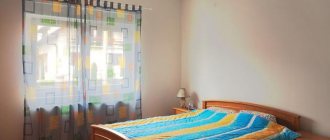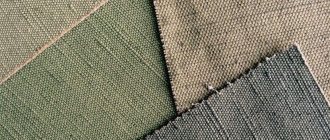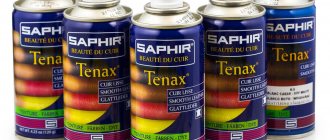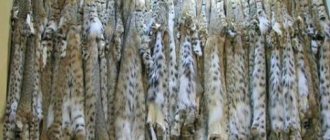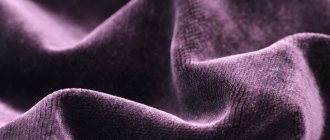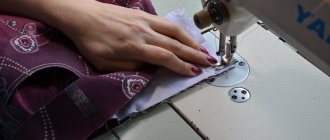Causes of the disease
- Abnormal muscle development.
- Scars in the neck area.
- Pathological development of the vertebrae.
- Chronic and acute inflammation of muscle tissue.
- Long-term progression of diseases of the eyes, ears, salivary glands.
- Changes in bone tissue.
Depending on the causes of the disease, congenital and acquired forms are distinguished. A child may be born with a pathology if the mother had severe toxicosis, oligohydramnios, or the threat of spontaneous abortion. Common causes include multiple births, abnormal position and fetal trauma. They can be born with a congenital tilt of the head if there was an entanglement of the umbilical cord, pelvic or transverse presentation, or birth trauma. Source: https://www.ncbi.nlm.nih.gov/pubmed/25419317 Kessomtini W, Chebbi W Congenital muscular torticollis in children // Pan Afr Med J. 2014 Jul 4;18:190 Acquired pathology can manifest at any age . Causes include myositis and sarcoma. There are right-, left- and bilateral torticollis.
To understand how to correct torticollis in a child, you need to determine the mechanism that contributed to the development of the deformity. There are muscular, articular, bone, neurogenic, dermo-desmogenic and compensatory pathologies.
Trench collar for torticollis
The Shants collar helps fix the spine in the neck area. The Shants collar for torticollis helps fix the position of the child's vertebrae, and also reduces the load on the cervical spine.
The trench collar is a device that encircles the neck with Velcro , which adjusts the length of the collar depending on the size of the neck circumference.
The material used to make the collar is flexible medical polyurethane foam, which is protected in a soft cover.
At the same time, the elasticity of the device and softness are ensured. There are soft, semi-soft and hard collars.
The latter are not covered with a soft cover, but are a plastic frame with Velcro.
Indications
The chance collar is suitable for both adults and newborn children.
The multifunctionality of the collar allows it to be used for the following pathologies:
- hyperexcitability;
- complications of the nervous system during difficult childbirth or pathological pregnancy;
- short neck syndrome;
- postpartum cranial injury in a newborn due to rapid or too long labor;
- development of torticollis in newborns.
Important! Only a specialized specialist can prescribe wearing a trench collar. Using a collar on your own can significantly weaken muscles and impair functional development.
Types of pathology
- Muscular – disorders affected the sternocleidomastoid and trapezius muscles. The reasons may be: insufficient blood supply, tearing of fibers, underdevelopment. Often the defect is aggravated by birth trauma.
- Bone and articular deformation appears with fusion of the vertebrae, the presence of wedge-shaped and accessory vertebrae. The disease can develop with dislocation and subluxation of the median joint, vertebral fracture, as well as deformities caused by tuberculosis, tumor formation, and osteomyelitis.
- Neurogenic - provoked by intrauterine infection, hypoxia, muscle dystonia. The acquired disease develops in the presence of cerebral palsy, previous encephalitis, poliomyelitis, and tumor formations of the central nervous system.
- Dermo-desmogenic - observed with lateral folds on the neck. The disease can develop due to injuries, burns, inflammatory processes in the lymph nodes, and in the presence of scars that form a pathological slope.
- Compensatory – acquired pathology, usually caused by eye problems: astigmatism, strabismus. The cause may be hearing loss. In practically healthy children, torticollis occurs due to improper placement in a crib, being carried in the arms with one side facing oneself, or placing toys on one side.
Symptoms: how to understand that a child has torticollis?
With bilateral pathology, the baby's head may be pressed to the chest or thrown back, while movements of the cervical spine are limited.
If a child has an osteogenic form , a bend in one direction and shortening are visually noticeable. The head is set low and its movements are limited.
In the case of neurogenic pathology, skeletal muscles have increased tone on one side and decreased tone on the other. On the side where the defect is, the leg is bent, the hand is clenched, while the head moves freely.
Development over time
In the early form, problems are noticeable in the first days, in the late form - in the second week from birth. The child holds his head to one side and a lump is felt to the touch. After 2-3 months, the defect manifests itself in incorrect position of the head, hypertonicity of the neck muscles and back. The legs have asymmetrical folds.
Already by 4-5 months, in the presence of torticollis, the child’s teeth grow more slowly and he reacts worse to sounds. By 7 months, strabismus becomes noticeable, and hypertonicity also appears in the lower part of the body.
By 12 months, a curvature of the spine is diagnosed, the baby lags behind in development, vision and hearing decrease. Facial features change - the eye and ear on the inclined side are located lower. Babies have poor balance, later they begin to sit and walk, and crawl asymmetrically.
By the age of 5-6 years, facial asymmetry is pronounced. On the side of the defect, the cheek is flatter, and disturbances in the development of the jaws are noticeable. In case of a congenital disease, concomitant hip dysplasia, cleft lip, malocclusion, and short frenulum are detected. Problems with the neck provoke hearing and vision impairment on one side, squint, and headaches.
Using an orthopedic pillow for torticollis in an infant
It has already been said above that a baby pillow should be used only if there are medical conditions - for children under one year of age, it is better to place a diaper folded as many times as possible under their head.
If a physician approves the use of such products, then when choosing, you should pay special attention to their color, size and shape. However, these issues can be addressed by a sales consultant or even the doctor himself.
Then parents need to understand the features of using an orthopedic pillow so that it has a positive effect on the baby’s health. In appearance, the orthopedic pillow has some asymmetry. On one side of the product there is a large cushion, on the other there is a similar roller under the head for newborns, but much smaller in size.
If the child sleeps mainly on his back, then it is better to place a smaller cushion under his head. A large cushion is intended for those cases if your child prefers to rest on his side. In the center of the pillow there is a special niche for the baby's head. Thanks to the special design, the position of your baby's neck will be optimal relative to the spine. In this case, the load will be distributed throughout the body as evenly as possible.
Diagnostic methods
During the examination, the specialist pays attention to the symptoms of torticollis in children: fixation of head tilt and rotation of the chin. If you try to turn your head, it hurts the child and he cries.
To determine the disease, they resort to various studies: x-rays, ultrasound, MRI, electromyography. A biochemical blood test is performed and sometimes referred to a neurologist for consultation. If symptoms of torticollis are detected in a child, it is necessary to consult with an orthopedist, neurologist, ophthalmologist, or otolaryngologist.
Diagnosis is carried out on the basis of anamnesis, examination and instrumental methods. Thanks to an integrated approach, osteoarticular defects are successfully identified: fusions, fractures, the presence of extra vertebrae. To confirm the neurogenic form of deformation, electromyography and electroneurography are performed. To diagnose myogenic torticollis, ultrasound of muscles is recommended, and for dermodesmogenic torticollis, ultrasound of soft tissues is recommended. To exclude concomitant diseases, the doctor may prescribe an ultrasound examination of the hip joints and neurosonography. Source: L.Yu. Khodzhaeva, S.B. Khodzhaeva Differential diagnosis of torticollis in children of the first year of life // Traumatology and Orthopedics of Russia, 2011, No. 3(61), p.68-72
Manufacturers and prices
Trelax
The most popular brand in the world of orthopedic pillows for children and adults. The main model for the treatment of torticollis in infants is P09 SWEET. Made of polyurethane with perforations for ventilation. It has two covers - an inner one and a pillowcase. Dimensions – 250x300x50 mm or 250x300x35 mm. The price of the product is 1,630 rubles.
Luomma
Russian-Finnish manufacturer of orthopedic pillows. Luomma F-505 is recommended by pediatricians for the prevention and treatment of torticollis from the first weeks of life until one and a half years. Price – 1,370 rub.
Trives
The main domestic manufacturer of orthopedic pillows. The “butterfly” for babies measures 31x24x7 cm and is recommended from the 28th day of life. Price – 350 rub.
Marcelle
The most common model from this Ukrainian. Price – 400-600 rub.
China
There are many orthopedic pillows for babies on our market from Chinese manufacturers. The average price for them varies depending on the size, materials of the filling and pillowcase, as well as appearance and design. The cheapest models cost around 300 rubles. But you shouldn’t get carried away with them because of their low quality. It is better to choose a pillow for 800 rubles, which will really help in the prevention and treatment of torticollis.
An orthopedic pillow should be recommended by a pediatrician based on the diagnosis of torticollis.
He will also tell you the size and shape, which will contribute to the gradual alignment of the baby’s cervical region. Here it is better not to show excessive independence, unless you can choose the color and design of the pillow yourself.
Do not forget that orthopedic pillows for newborns with torticollis are only one of several means to combat this disease. They complement massage, gymnastic procedures and other restorative measures prescribed by the doctor observing the child.
You may also be interested in information on how to sleep on a pillow for pregnant women. We recommend that you read about this in more detail.
How is the treatment carried out?
The choice of method depends on the type of disease. To treat acquired torticollis, they resort to conservative methods: gymnastics, massage. In case of congenital pathology, surgery is recommended. It is advisable to consult a doctor as soon as possible, since conservative treatment of torticollis in children is effective up to a year. Surgery is performed on children aged 2-3 years. Source: A.V. Gubin Algorithm of the surgeon’s actions for acute torticollis in children // Traumatology and Orthopedics of Russia, 2009, No. 1(51), pp. 65-69
In some cases, it is impossible to completely get rid of the problem, then therapeutic measures are aimed at strengthening the neck muscles and preventing the development of deformity.
Treatment begins after diagnosis. The main thing is to give the correct position. To do this, they stimulate the head to turn in different directions, use special styling, and control the correct wearing on the hands.
Exercise therapy, massage and physiotherapy are recommended for muscular torticollis. Doctors prescribe electrophoresis, UHF, paraffin baths and swimming. In some cases, the wearing of a Shants collar and a cervical orthosis is prescribed. Clinics use the Gleason loop traction method. Source: R.S. Alimkhanova Early diagnosis and treatment of congenital torticollis in children // Medicine and ecology, 2008, No. 3, pp. 41-42
What to do when a child has torticollis and conservative treatment is ineffective? In such a situation, if indicated, surgical correction is performed by cutting and lengthening the muscle. Such procedures can be carried out from 1.5-2 years.
For congenital osteoarticular pathology, corrective immobilization is prescribed in several stages. To cure the disease, use a plaster cast, a plastic head holder, and a Shants collar. Devices are selected taking into account the severity of the defect and the age of the baby.
If the subluxation cannot be corrected, spinal fusion (an operation in which the vertebrae are immobilized by fusion) in the cervical region is recommended. When diagnosing neurogenic pathology, pharmacotherapy is prescribed to reduce increased muscle tone and relieve excitability of the nervous system. Massage helps a lot. Dermo-desmogenic torticollis is treated by excision of scars and skin grafting.
It is necessary to understand that the speed of treatment is affected by age - problems in a 2-month-old baby are solved faster than in an 8-month-old baby. The earlier treatment is started, the greater the likelihood of a quick and complete recovery.
Massage at home
It is recommended to perform massage three times a day for six minutes. Movements should be gentle. During the procedure, the legs, arms, chest, muscles on the side of the deformity and the healthy cheek are stroked.
Then they move on to massaging the side of the torso, abdomen, neck, and feet. The child is laid on his stomach and massaged along the back and neck. Turn from one side to the other and finish the procedure by kneading the feet.
Exercises for kids
- Place the child on his healthy side, with his head extending beyond the table. One parent holds the baby, the other holds the head, periodically weakening the support. The exercise should be performed 4-8 times.
- Place your baby on his back with his head off the table. Tilt your head to your shoulders in a ratio of 1:3 - once towards the sick person, three times towards the healthy one.
- Take the baby in your arms in an upright position, holding the head from the back. Gradually reduce support. Once your head reaches your chest, repeat the exercise.
Physical education in water
How to treat torticollis at home? Do simple exercises in the water. Fill the bath, use a special inflatable circle that you need to put on the baby’s head. The beneficial effects of warm water and support promote muscle relaxation.
Start doing gymnastics, it will help relax your body and remove pathology. The baby can be placed on his back, holding him with his hand. You need to move your head in one direction and the other. Turn over onto your stomach and lead along the water, holding your chin. In this case, the sore spot must be kept in water.
Correct body position
Pay close attention to how your child lies. Create conditions so that the baby turns his head in different directions while watching the toys. Before laying down, place the baby on the healthy side first. Place a lamp behind your back or hang a toy to arouse interest and provoke a head turn.
For a baby, it is better to buy a medium-hard mattress. An orthopedic pillow helps a lot. It can only be used with the permission of a doctor and after reaching 6 months. We suggest taking a regular diaper and folding it to use instead of a pillow.
When you carry your baby, hold him in an upright position and make sure his shoulders are level. Place your baby on his stomach more often to improve the condition of the neck muscles.
Description
Torticollis can be caused by incorrect position of the fetus in the womb, birth trauma, external factors and pathological muscle strains of the thoracic and cervical skeleton.
Correction of the spine and neck must begin as early as two weeks of age. A prerequisite is corrective head position during sleep. After all, it is in sleep that most of the baby’s life takes place. Why do you need an orthopedic pillow for newborns with torticollis? An orthopedic pillow to combat torticollis is designed to give the head the most natural position possible. It may look different, but the basic principle is always the following: a small cushion under the neck, a recess for the back of the head and restrictions on turning the head to the side.
The video explains in detail what torticollis is:
Prevention of torticollis
It is impossible to prevent congenital pathology in children. To prevent the acquired form, it is necessary to avoid injury to the neck and undergo regular examination by a surgeon.
If you detect signs or suspect a pathology, do not resort to self-medication - visit an experienced SM-Clinic specialist. Our pediatric surgeon will examine the baby and, if necessary, select treatment.
Sources:
- L.Yu. Khodzhaeva, S.B. Khodjaeva. Differential diagnosis of torticollis in children of the first year of life // Traumatology and Orthopedics of Russia, 2011, No. 3(61), pp. 68-72.
- A.V. Gubin. Algorithm of the surgeon’s actions for acute torticollis in children // Traumatology and Orthopedics of Russia, 2009, No. 1(51), pp. 65-69.
- R.S. Alimkhanov. Early diagnosis and treatment of congenital torticollis in children // Medicine and ecology, 2008, No. 3, pp. 41-42.
- https://www.ncbi.nlm.nih.gov/pubmed/25419317 Kessomtini W, Chebbi W. Congenital muscular torticollis in children // Pan Afr Med J. 2014 Jul 4;18:190.
Pitsukha Svetlana Anatolyevna Clinic
Author of the article
Pitsukha Svetlana Anatolevna
Doctor of the highest qualification category
Specialty: neurologist
Experience: 24 years
The information in this article is provided for reference purposes and does not replace advice from a qualified professional. Don't self-medicate! At the first signs of illness, you should consult a doctor.
Prices
| Name of service (price list incomplete) | Price |
| Appointment (examination, consultation) with a neurologist, primary, therapeutic and diagnostic, outpatient | 1750 rub. |
| Consultation (interpretation) with analyzes from third parties | 2250 rub. |
| Prescription of treatment regimen (for up to 1 month) | 1800 rub. |
| Prescription of treatment regimen (for a period of 1 month) | 2700 rub. |
| Consultation with a candidate of medical sciences | 2500 rub. |
| Transcranial duplex scanning (TCDS) of cerebral vessels | 3600 rub. |
